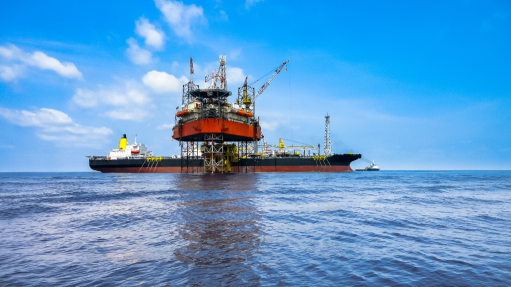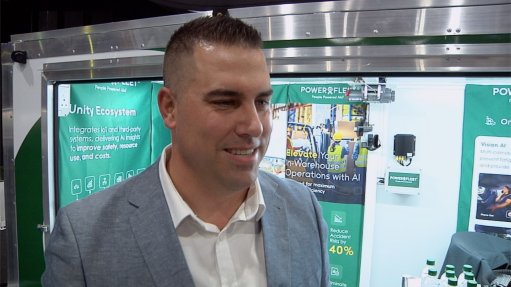Researchers report that space weather events could endanger railway safety


Photo by SANSA
Photo by SANSA
Researchers at the University of Lancaster in the UK have determined that significant space weather events could interfere with railway signalling systems at sea level, on Earth, thereby creating safety risks and even causing accidents. Severe space weather events could create what are called ‘geomagnetically induced currents’ (GICs) which could interfere with electrical systems, including transmission and distribution grids. (GICs caused major power cuts in Canada’s Quebec province in 1989 and Sweden’s Malmo city in 2003, for example.)
Space weather is basically the impact solar storms have on the Earth’s atmosphere and below. The Sun is often a turbulent body, and produces a number of different types of events and storms. There are extra-high speed solar wind streams, solar flares (which are intense bursts of radiation resulting from the release of magnetic energy associated with sunspots), and coronal mass ejections (CMEs, which are large clouds of plasma and magnetic field which erupt from the Sun). When particularly strong solar flares or CMEs came straight at Earth, they could disturb the terrestrial magnetic field (which protects us from routine space weather) and create GICs.
In South Africa, the South African National Space Agency operates Africa’s only 24/7 space weather forecasting centre, at Hermanus, in the Western Cape province.
The University of Lancaster research team, led by PhD researcher Cameron Patterson and Professor Jim Wild, undertook computer modelling of how GICs move through the track circuits of alternating current overhead cable electrified lines. Their modelling was focused on two major rail connections in the UK, namely the Preston to Lancaster section of the West Coast Main Line, and the Glasgow to Edinburgh line.
“Crucially, our research suggests that space weather is able to flip a signal in either direction, turning a red signal green or a green signal red,” reported Patterson. “This is obviously very significant from a safety perspective. By building a computer model of the signalling track circuits using realistic specifications for the various components of the system, we found that space weather events capable of triggering faults in these tracks circuits are expected in the UK every few decades.”
Signal failures could be categorised into “right side” and “wrong side”. Right-side failures happened when green lights switched to red. This was generally a ‘fail-safe’ situation which reduced the chances of an accident. Wrong side failures saw red lights switch to green, and were obviously much more dangerous malfunctions. The research team has shown that wrong-side failures could happen at lower geoelectric field strength than that needed for right-side failures. That is, weaker solar storms could cause wrong-side failures.
“Other industries such as aviation, electricity generation and transmission, and the space sector are considering the [space weather] risks to their operations, and exploring how these might be mitigated,” highlighted Wild. “It’s important that the rail sector is included in this planning.” ![]()
Comments
Press Office
Announcements
What's On
Subscribe to improve your user experience...
Option 1 (equivalent of R125 a month):
Receive a weekly copy of Creamer Media's Engineering News & Mining Weekly magazine
(print copy for those in South Africa and e-magazine for those outside of South Africa)
Receive daily email newsletters
Access to full search results
Access archive of magazine back copies
Access to Projects in Progress
Access to ONE Research Report of your choice in PDF format
Option 2 (equivalent of R375 a month):
All benefits from Option 1
PLUS
Access to Creamer Media's Research Channel Africa for ALL Research Reports, in PDF format, on various industrial and mining sectors
including Electricity; Water; Energy Transition; Hydrogen; Roads, Rail and Ports; Coal; Gold; Platinum; Battery Metals; etc.
Already a subscriber?
Forgotten your password?
Receive weekly copy of Creamer Media's Engineering News & Mining Weekly magazine (print copy for those in South Africa and e-magazine for those outside of South Africa)
➕
Recieve daily email newsletters
➕
Access to full search results
➕
Access archive of magazine back copies
➕
Access to Projects in Progress
➕
Access to ONE Research Report of your choice in PDF format
RESEARCH CHANNEL AFRICA
R4500 (equivalent of R375 a month)
SUBSCRIBEAll benefits from Option 1
➕
Access to Creamer Media's Research Channel Africa for ALL Research Reports on various industrial and mining sectors, in PDF format, including on:
Electricity
➕
Water
➕
Energy Transition
➕
Hydrogen
➕
Roads, Rail and Ports
➕
Coal
➕
Gold
➕
Platinum
➕
Battery Metals
➕
etc.
Receive all benefits from Option 1 or Option 2 delivered to numerous people at your company
➕
Multiple User names and Passwords for simultaneous log-ins
➕
Intranet integration access to all in your organisation


















